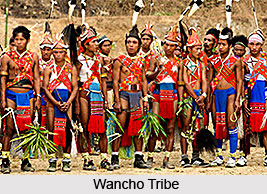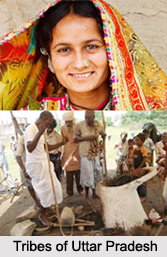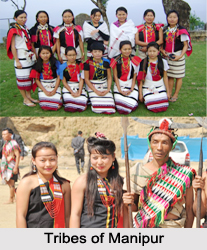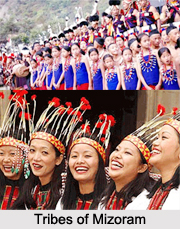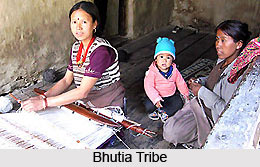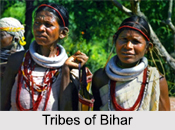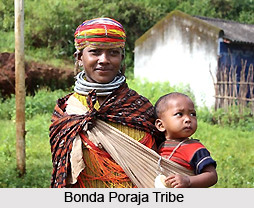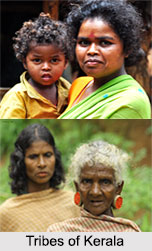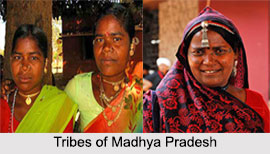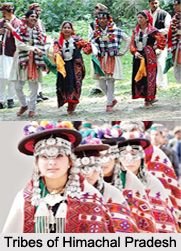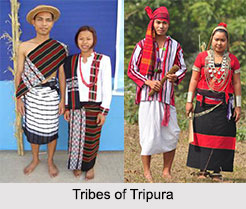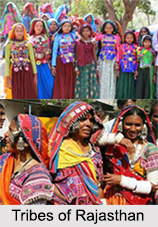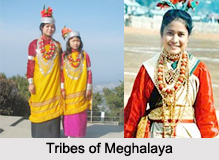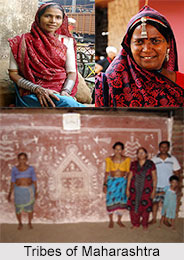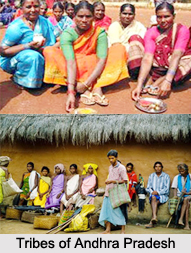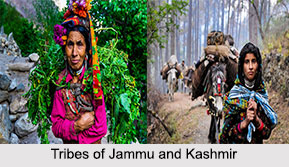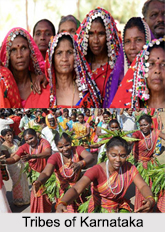The Kolom Sing forms a significant part of the Munda Tribe festival. The word Kolom means a threshing floor and kolom sing is the sacrifice offered by the Pahan on behalf of the whole community in his threshing floor. No fixed day or time is selected for its celebration but is usually celebrated in the month of Agahan i.e. during November-December when the paddy crop has been cut. The festival is performed on either Mondays or Wednesdays or Fridays. Upon collecting the paddy crop the Pahan instructs his assistant to inform the villagers who either beats the drum or speaks aloud to declare the appointed day and time for the celebration of the festival. The villagers are instructed to assemble at the Pahan`s threshing floor with a bowl of beer.
On the festive day the Pahan first bathes to purify himself and then departs for the fields to fetch a handful of paddy. His assistant goes to the barn to prepare an oven for cooking the meal while the wife of the Pahan plasters the barn with cow dung. Later the Pujar upon bathing visits the Pahan and together they take a winnowing shovel that contains the sacrificial fowl, pearl rice, the freshly cut paddy and some beans to the threshing floor. The Pujar fetches fresh water and new cooking utensils for preparing the meal. Prior to the sacrifice the fowl is kept fasting for one complete day and then offered some rice before being sacrificed. It is believed that if the fowl consumes more rice it signals a good harvest however, its reluctance to consume the offered food indicates that poor crops will be yielded.
The Pahan placing three heaps of rice on the plastered floor keeps the paddy and thatch grass beside it and facing the eastern side he feeds the fowl some rice. The Pahan upon pronouncing a hymn cuts the neck of the fowl and drops some blood on the three heaps of pearl rice and places a few feathers of the fowl near the rice.
The fowl is now prepared with some pearl-rice in form of a cake that is later offered before the three little heaps that represent the Singbonga, the village spirits and the family ancestors. The portion of the cake is immediately eaten away by the Pahan and the Pujar. The three heaps are now covered with a winnowing shovel to prevent others from touching them. The remaining part of the fowl is prepared in a new stewing pot.
After the completion of the rituals the villagers participate in a common meal prepared by the Pujar. The womenfolk bring with them a cup of beer and offer it first to the Pahan and then to the Pujar. Fowl, rice beans, pulse and beans are some of the important items prepared during the feasting.
The people assembled during the festival split into two groups, male and female. The males further divide themselves into two groups, one constituting the khuntkattidars and the other raiyats. The meals prepared during the festival are of two different kinds, one for the Khuntkattidars and the other for the raiyats. Three morsels of the meal prepared for the Khuntkattidars are offered to the three little rice heaps, after the winnowing shovel is removed. The meals prepared for the raiyats are however, not offered to the three heaps of pearl-rice. The three groups of Khuntkattidars, raiyats and the women finally consume their meal separately. After the meal, the Pahan covers the three heaps of rice with some blood on it and the cakes of the liver and chest, rice, bean and pulse offered to those heaps, with the winnowing shovels. These are then left covered for the whole night and are later removed in the next morning.
The Pahan followed by the Pujar, upon purifying themselves, settle down to entertain themselves with the handia. The ritual is followed by Jadur dances and merrymaking. All the young members in the village gather at the threshing floor after midnight and continue dancing until they are exhausted.
